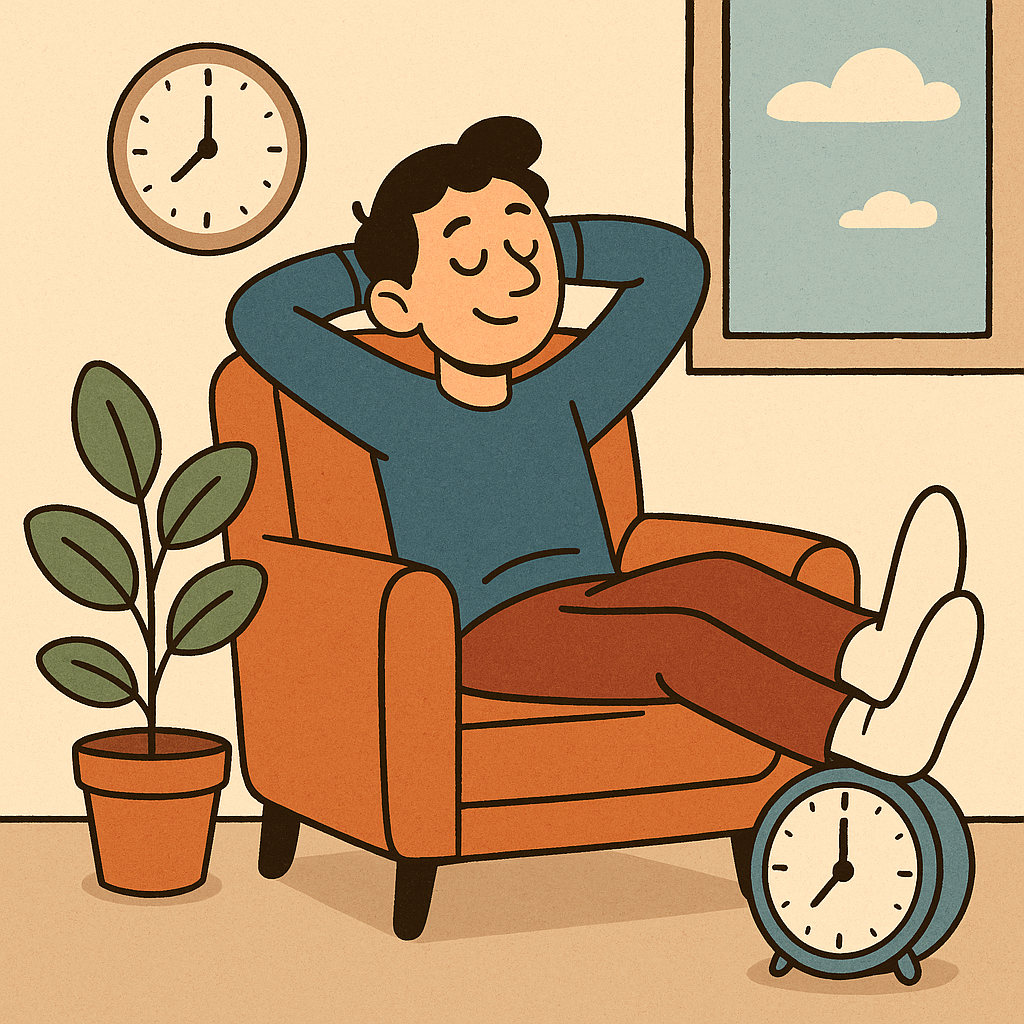Schedule time to do absolutely nothing might feel radical—but it’s proven to improve mental clarity and creativity. This article explores the rising trend and shows you how to reclaim calm in a busy world.

The Rise of Intentional Idle: Why It’s Trending
“Niksen” and the Slow-Living Movement
The Dutch concept of niksen—deliberate idleness without purpose—has gained global attention as people seek relief from burnout and stress.
This trend aligns with slow-living philosophies that encourage carving purposeful non-productivity into our days.
Digital Detox and Viral Self-Care Trends
Recently, “bed-rotting”—scrolling or lying in bed without guilt—gained popularity on TikTok as an antidote to toxic productivity. Though experts warn against overuse, they say it can help decompress when balanced with healthy habits.
What Happens When You Schedule Time to Do Absolutely Nothing
Boost in Creativity and Problem-Solving
Research shows that letting your mind drift activates the brain’s default mode network, which fosters insights and memory consolidation.
For instance, students who rested quietly after learning retained information better than those who continued to work.
Stress Reduction and Mental Reset
Taking purposeful breaks helps lower cortisol and combats emotional exhaustion—benefits backed by therapists recommending scheduled downtime.
Enhanced Focus and Productivity
Studies from Ohio State and Inc.com show that fewer scheduled tasks make you feel less rushed and more productive.
How to Schedule Time to Do Absolutely Nothing
1. Decide on a Time
Choose a daily or weekly time block. Even 10–15 minutes works. Try starting with the smallest unit you can manage.
2. Use a Neutral Label
Avoid naming it “idle” or “self-care.” Instead, call it “empty block” or leave it blank. This prevents it from feeling like a chore .
3. Disconnect from Tech
Leave your phone out of sight. Mindful rest means no scrolling—just letting your thoughts wander naturally.
4. Experiment with Settings
Try sitting in silence, gazing out a window, or strolling without a goal. Adapt until you find your ideal form of nothingness.
5. Combine or Alternate with Social Downtime
Doing nothing alone is powerful—but relaxing with loved ones builds connection without pressure.
Common Questions Answered
Will Nothing Feel Like Wasted Time?
Yes—and that’s OK. Scheduling emptiness confronts our cultural discomfort with unstructured time. Over time, it becomes more restorative than waste.
How Much Nothing Is Enough?
Start small: 5–10 minutes daily or 30 minutes weekly. Allow gradual extension as you feel its benefits.
Could It Backfire?
If you only lie in bed all day (“bed-rotting”), it may harm sleep habits. Keep your downtime varied and avoid excessive inactivity.
Real-Life Stories: Scheduling Nothing Worked
- Remote-worker’s secret weapon: One writer scheduled “do-nothing” blocks in prime work hours. The result? Lower stress and higher focus.
- Corporate buffer zones: Managers use unscheduled buffers for thinking, breathing, and catching up—preventing burnout .
A 5-Step Guide to Get Started
- Pick a day and time: Schedule 10 minutes right after lunch or before starting afternoon tasks.
- Entry tip: Label your calendar “empty” or leave it blank.
- Shut it down: Close your laptop, silence phone notifications.
- Choose your setting: Sit, walk, look out a window—no agenda.
- Reflect after: Jot a note on how you feel. Track its effect on your energy and focus.
Benefits You’ll Actually Notice
- Sharper thinking: Brain resets allow for mental clarity.
- Calmer mood: Less cortisol, improved resilience.
- Creative spikes: Ideas often emerge in silent moments.
- Improved relationships: Unpressured social time strengthens bonds.
Conclusion
The pressure to always be productive has created a cultural void where silence feels like a luxury. But scheduling time to do absolutely nothing is a powerful antidote: scientifically proven for stress relief, creativity, and better mental health. Try carving out just a few minutes today—and notice how much richer nothing can be.
References
Henry Ford Health (2022). 6 Health Benefits Of Taking Time To Do Nothing. Retrieved from https://www.henryford.com/blog/2022/12/6-health-benefits-of-taking-time‑to‑do‑nothing
Jabr, F. (2013). Why Your Brain Needs More Downtime. Scientific American. Retrieved from https://www.scientificamerican.com/article/mental‑downtime/
Time Magazine (2023). Doing Nothing Can Make You More Productive. Retrieved from https://time.com/6254135/doing‑nothing‑more‑productive/






